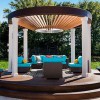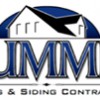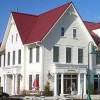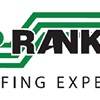Staub Contractors has been in the business of roofing since 1974. We began as a small residential enterprise providing services such as shingle roofs, wood shakes, windows, aluminum siding and gutters. We soon began exploring the world of commercial roofing and expanded into that marketplace. We now have two full service divisions, residential and commercial. We continue to be family owned and operated. The original owner's name is Bernie Staub, who now heads the commercial division. Son, Christopher, has now taken over the residential division after working with the tools for the past ten years.
For most people, purchasing a new roof is a rare event. You probably don't think much about your roof until there is a problem Your home is likely your biggest investment and you want to take care of it. A leaky roof can cause incalcuable damage to the dtructure of your house and the interior of your home in a relatively short time. While your roof protects your home, siding can beautify it and make it maintenance free. The siding products that are now available come in a variety of colors and styles and last for many many years without much upkeep.
Energy concerns have driven the building trades to make our homes more energy efficient. This is mostly accomplishedby sealing our homes up tighter than a drum. Unfortunately, most homes are now underventilated. Lack of proper ventilatio is a major cause of premature roof failure and ice dam formation. Proper attic insulation requires an even layer on the floor of the attic to prevent the heat from the house from escaping through the roof. Secondly, the underside of the roof needs to stay cold and dry.
Once a call comes in for a commercial roof bid, a process is set in motion that we hope will insure your satisfaction. Staub Contractors will visit your site. At this time we will evaluate the overall condition of your roof and field measure the project. This inspection includes walking the entire roof to determine the current condition of the surfacem, underlayment and flashings. We look for signs of wear as well as signs of drainage problems. This inspection can also include a core test of of your roof.
Similar Businesses







